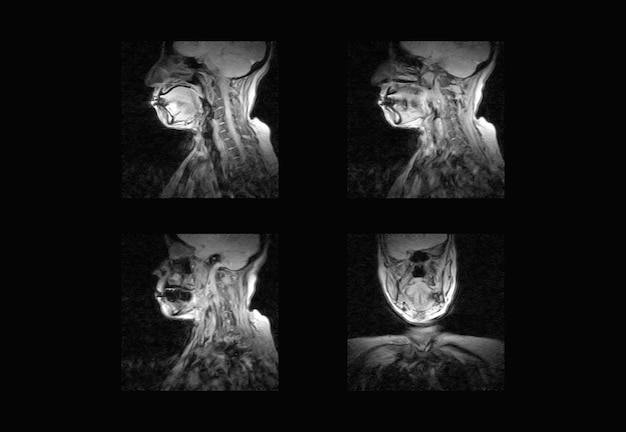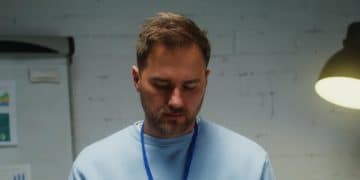Is That Diagnosis Even Possible? Medical Drama Myths Debunked

Is That Diagnosis Even Possible? delves into the unrealistic medical scenarios often portrayed in medical dramas, comparing fictional cases with real-world medical knowledge and case studies to debunk common myths.
Medical dramas have captivated audiences for decades with their high-stakes scenarios, complex medical cases, and brilliant doctors solving seemingly impossible mysteries. But how much of what we see on screen is actually rooted in reality? This article explores the question: Is That Diagnosis Even Possible? Debunking Medical Drama Myths with Real-World Case Studies.
Decoding Medical Drama Diagnoses: Separating Fact from Fiction
Medical dramas often take creative liberties to enhance entertainment value, leading to the portrayal of rare diseases as common occurrences and diagnostic processes that are far from accurate. Understanding the difference between these dramatized scenarios and real-world medical practice is crucial for viewers.
The Allure of the Rare Disease
One common trope in medical dramas is the prevalence of extremely rare diseases. While these cases can be intriguing, they don’t reflect the day-to-day reality for most healthcare professionals.
Speed and Accuracy: A Fictional Ideal
Another common exaggeration is the speed and accuracy of diagnoses. In reality, diagnosing a patient can take time, involving multiple tests and consultations.

Medical dramas often present diagnoses as a eureka moment, but actual medicine frequently requires a much more detailed and thorough process.
- Misdiagnosis and diagnostic errors are common in real-world medicine.
- The process of elimination is necessary to narrow down medical possibilities.
- Even experts in the field can disagree on the proper diagnosis in certain cases.
Ultimately, medical dramas are meant to entertain, and embellishments are common. It’s important to be aware of the limitations of what is portrayed on screen.
Unrealistic Scenarios: How Dramas Distort Medical Reality
The medical accuracy of procedures and treatments showcased on screen is often compromised for the sake of storytelling and capturing the audience’s attention. Shows tend to skip protocols and jump directly to conclusions.
The “Miracle Cure” Trope
Medical dramas often rely on the “miracle cure” trope, where a seemingly incurable illness is suddenly resolved through an unconventional treatment. Real-life medicine rarely offers clean and effortless solutions, however.
Exaggerated Recovery Timelines
Recovery timelines are frequently condensed in medical shows to suit the plot’s timeframe. What might take months or years in reality is resolved in a matter of episodes.

When the dramatic emphasis rests on a speedy resolution, the actual hard and slow work of recovery can become totally ignored.
- Medical accuracy is frequently compromised for storytelling and capturing the audience’s attention.
- Creative liberties are often used in medical scenarios to generate greater drama and suspense.
- There must be disclaimers regarding medical advice in the media to reduce the risk of misinformation.
Awareness of unrealistic scenarios allows viewers to enjoy medical dramas as entertainment, without mistaking them for accurate sources of health information.
Ethical Dilemmas: Exaggerations and Their Impact
Medical dramas often explore ethical dilemmas faced by healthcare professionals. While the shows often exaggerate these scenarios for dramatic effect, the underlying ethical considerations are very real.
Confidentiality Breaches
Violations of patient confidentiality are common in medical dramas. In reality, healthcare professionals are bound by strict ethical codes and legal regulations to protect patient privacy.
Conflicts of Interest
Medical dramas also tend to play off conflicts of interest among medical personnel. While conflicts of interest can arise in the healthcare field, hospitals enact oversight and reporting measures to reduce their harmful effects.
Real ethical issues are complex, nuanced, and rarely have easy answers. By presenting only the most extreme scenarios, medical dramas can distort public perception of these issues.
Case Study 1: The “Instant Diagnosis” vs. Real-World Neurology
Medical dramas often portray neurologists as medical sleuths who can diagnose complex neurological conditions within minutes, using a single test or observation. To explore the distinction between this portrayal and real-world neurology, let’s compare a fictional scenario with a real-life case study.
Fictional Scenario: Dr. House Diagnoses Lupus in Minutes
In the popular medical drama House, the main character, Dr. House, famously diagnoses a patient with lupus after a series of unconventional tests and a sudden insight. The diagnosis is presented as a moment of brilliance, with little explanation of the scientific reasoning behind it.
Real-World Case: Diagnosing Multiple Sclerosis
Multiple sclerosis (MS) is a complex neurological condition whose diagnosis usually involves a combination of lab tests, MRIs, and neurological exams over a long period of time. The diagnostic process can take months and it requires the insights of multiple specialists. It is hardly a eureka moment.
- Neurological diagnoses are not simple or quick.
- It is a step-by-step process of eliminating possibilities.
- A single symptom can be related to multiple conditions.
Real-world neurology requires the input of many specialists to analyze all data and to diagnose accurately.
Case Study 2: The “Uncommon Infection” vs. Real-World Infectious Disease
Medical dramas frequently feature patients with rare and exotic infections, often diagnosed and treated in record time. Let’s check whether those representations are at all consistent with real infectious diseases.
Fictional Scenario: Outbreak in a Hospital
In the fictional outbreak, hospital staff rapidly identify and contain a rare airborne virus. The diagnostic and containment process proceeds efficiently, preventing a larger outbreak and showcasing the protagonists’ medical expertise.
Real-World Case: Diagnosing Tuberculosis
Diagnosing tuberculosis (TB), one of the world’s oldest and well-known infectious diseases, requires a multi-step process involving physical examinations, skin tests, blood tests, and chest X-rays. In some cases, doctors require a sample of sputum to confirm the diagnosis.
In both the fictional and the real-world case, containment is important; however, medical dramas ignore the long lead times usually associated with infectious disease.
How to Enjoy Medical Dramas Responsibly
Medical dramas can be a source of both fun and entertainment; however, misrepresentations of medical scenarios are common. Fortunately, there are several strategies that viewers can leverage.
Be Aware of Entertainment Intent
Always remember that medical dramas are designed to entertain, not educate. The primary goal of these shows is to attract and maintain viewership, which often involves exaggerating or distorting the reality of medical practice.
Understand the Limits
Medical information should always come from trusted sources like books, journals, and medical professionals rather than from TV. It is important to cross-reference the plots of medical dramas with real-world studies.
- There are large differences between the treatment of disease in fiction and in real life.
- Many symptoms are not unique to particular diseases.
- Be aware of potential misinformation and cross-reference information when possible.
By being mindful of the entertainment intention, acknowledging the limits of medical dramas, and consulting trusted sources of medical information, viewers can enjoy these shows for their entertainment value without falling victim to misinformation.
| Key Concept | Brief Description |
|---|---|
| ✅ Instant Diagnoses | Medical dramas portray instant diagnoses, while real-world medicine often requires extensive testing and time. |
| 🧪 Unrealistic Scenarios | Miracle cures and exaggerated recovery timelines distort medical reality on screen. |
| 🧑⚕️ Ethical Dilemmas | Ethical dilemmas are often exaggerated for dramatic effect, misrepresenting the complexities of medical ethics. |
| 🦠 Rare Diseases | Portrayal of rare diseases as common occurrences is a frequent exaggeration in medical dramas. |
Frequently Asked Questions
Medical dramas often compress the time required for diagnosis, suggesting that complex conditions can be identified rapidly, whereas, in reality, the process often involves multiple tests and consultations over weeks or months.
Rare diseases add dramatic tension to the plot, appealing to a viewer’s need for excitement. These conditions provide unique medical mysteries that are more appealing than the more common and mundane.
Miracle cures are extremely rare in real medicine. Effective treatments exist for many conditions, but they usually involve detailed and long-term management rather than quick fixes with no consequences.
Ethical issues in medical dramas are often highlighted and presented in sensational ways for dramatic content. In real-world practice, ethical issues are often more ambiguous and nuanced, rarely with a clear solution.
Viewers should remember that medical dramas are primarily for entertainment rather than education. It is crucial to consult trusted sources and medical professionals for any real medical information.
Conclusion
While medical dramas provide entertainment, it is important to discern the difference between dramatic exaggeration and medical reality. By developing a critical eye and recognizing the limitations of fictional portrayals, audiences can enjoy medical dramas responsibly.





